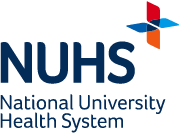Test and diagnosis
- Clinical breast examination
- Mammogram
- Breast ultrasound
- Breast magnetic resonance imaging (MRI)
- Core biopsy
Treatments
There has been a vast improvement in the treatment options available today for breast cancer. In the past, the gold standard was a mastectomy, which is the removal of the whole breast. Today, breast conservation surgery is a viable option for most cancers, but must be followed by radiotherapy. There are also a vast variety of reconstructive options. After surgery, most women will require chemotherapy, after which, if suitable, they will be prescribed medication (usually Tamoxifen) for five years.
Mastectomy is the removal of all tissue from the breast with the cancer. It is usually performed if the cancerous lump is large in proportion to the breast or the cancer cells are present in many areas of the breast. This surgery ensures that all breast tissue that can be removed will be removed and the need for radiotherapy after this operation is less than 5%.
Lumpectomy surgery is a partial mastectomy surgery. It removes the breast cancer and some of the surrounding tissues.
Radiation therapy is the use of high energy radiation to kill cancer cells within the treated area. Radiation therapy is used after the surgery to destroy any cancer cells remaining in the breast.
Chemotherapy is the use of drugs to kill the cancer cells which may have escaped from the original tumour. These drugs may be taken orally or injected into the vein. These drugs enter into the bloodstream, travel through the whole body and it can destroy cancer cells throughout the body. Besides destroying cancer cells, chemotherapy may also affect normal cells.
Hormone therapy is used to block the hormone receptors, preventing the hormones from getting to the tumours and thus stopping the growth of the tumour. These are usually in the form of tablets, namely Tamoxifen or newer options such as aromatase inhibitors.

















